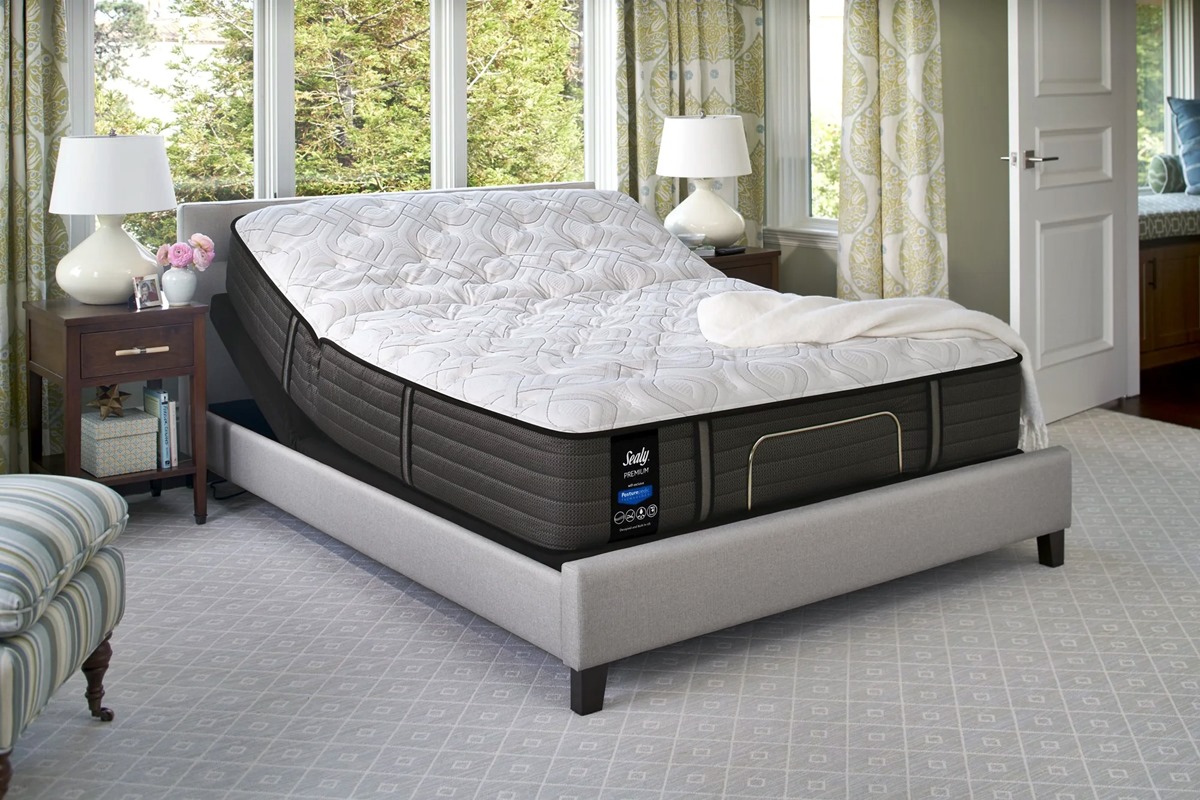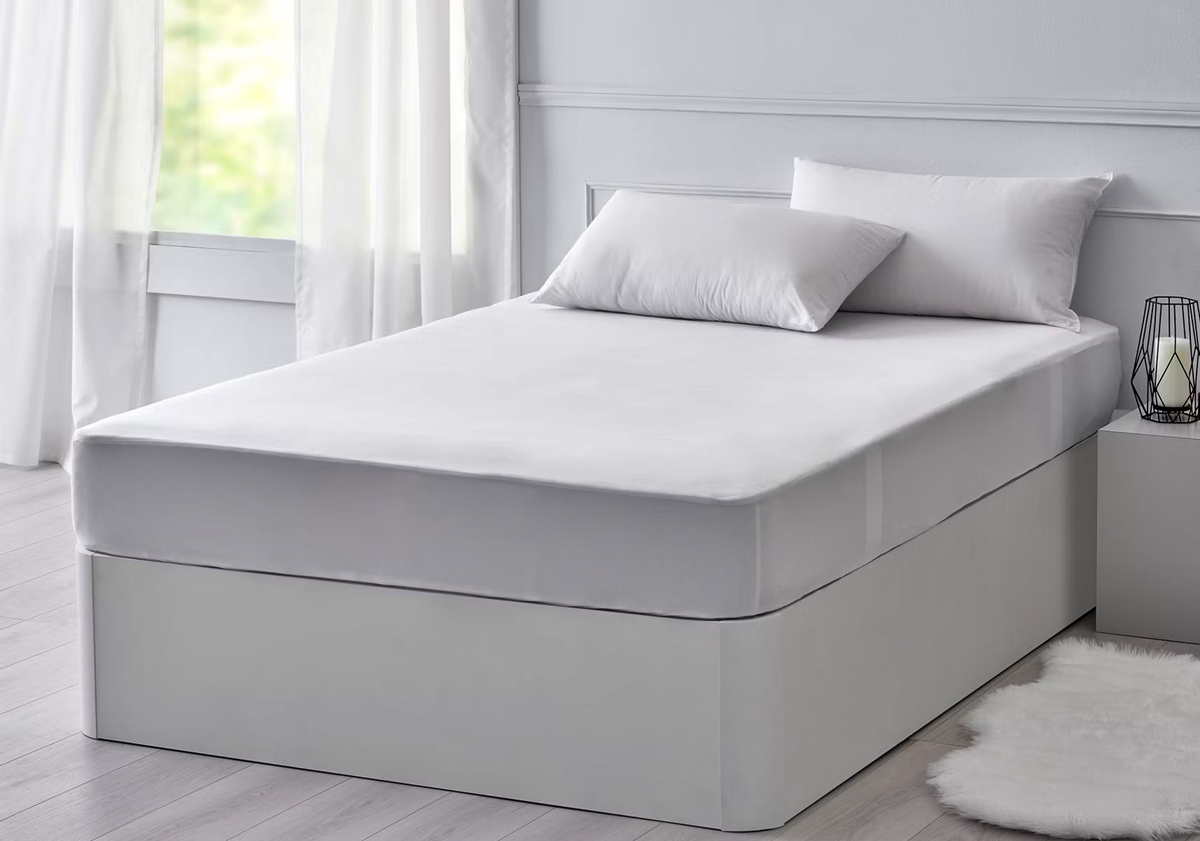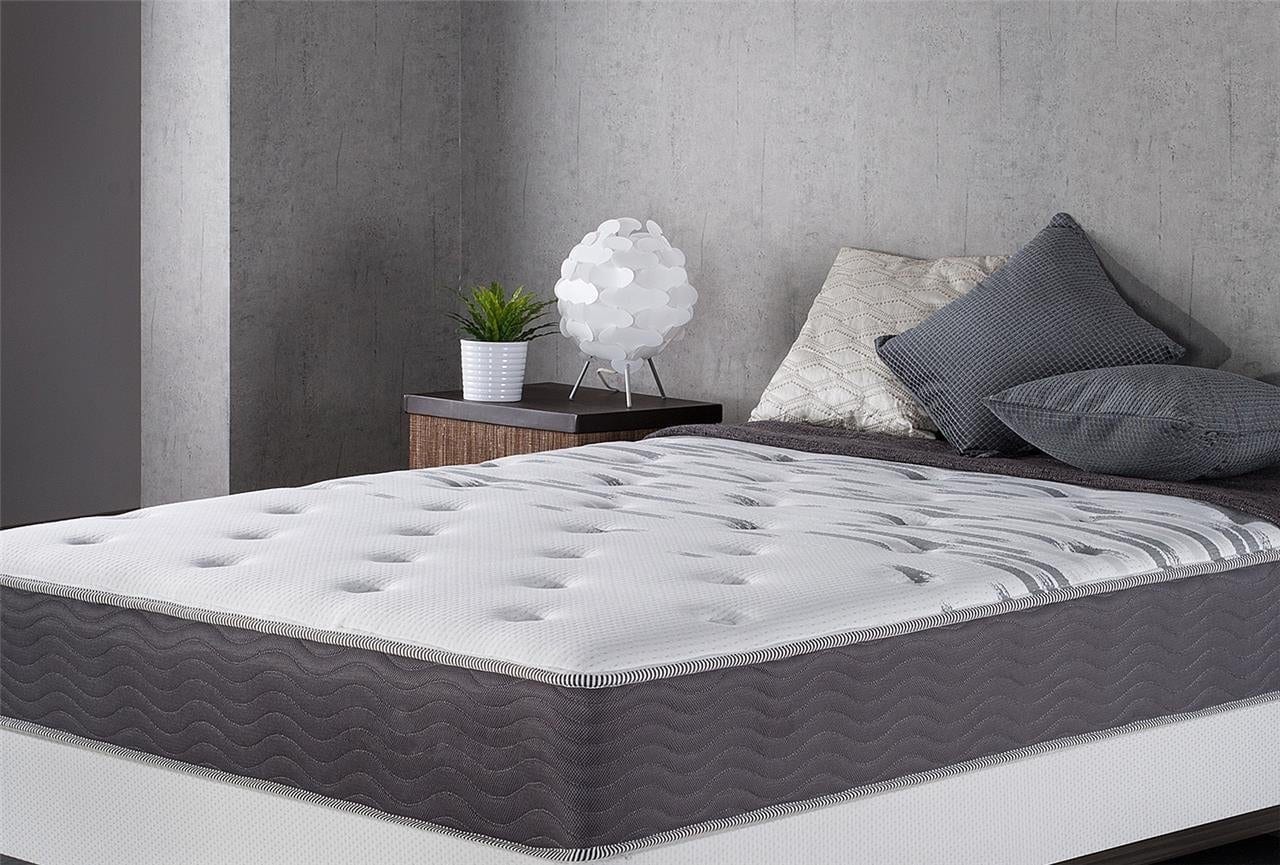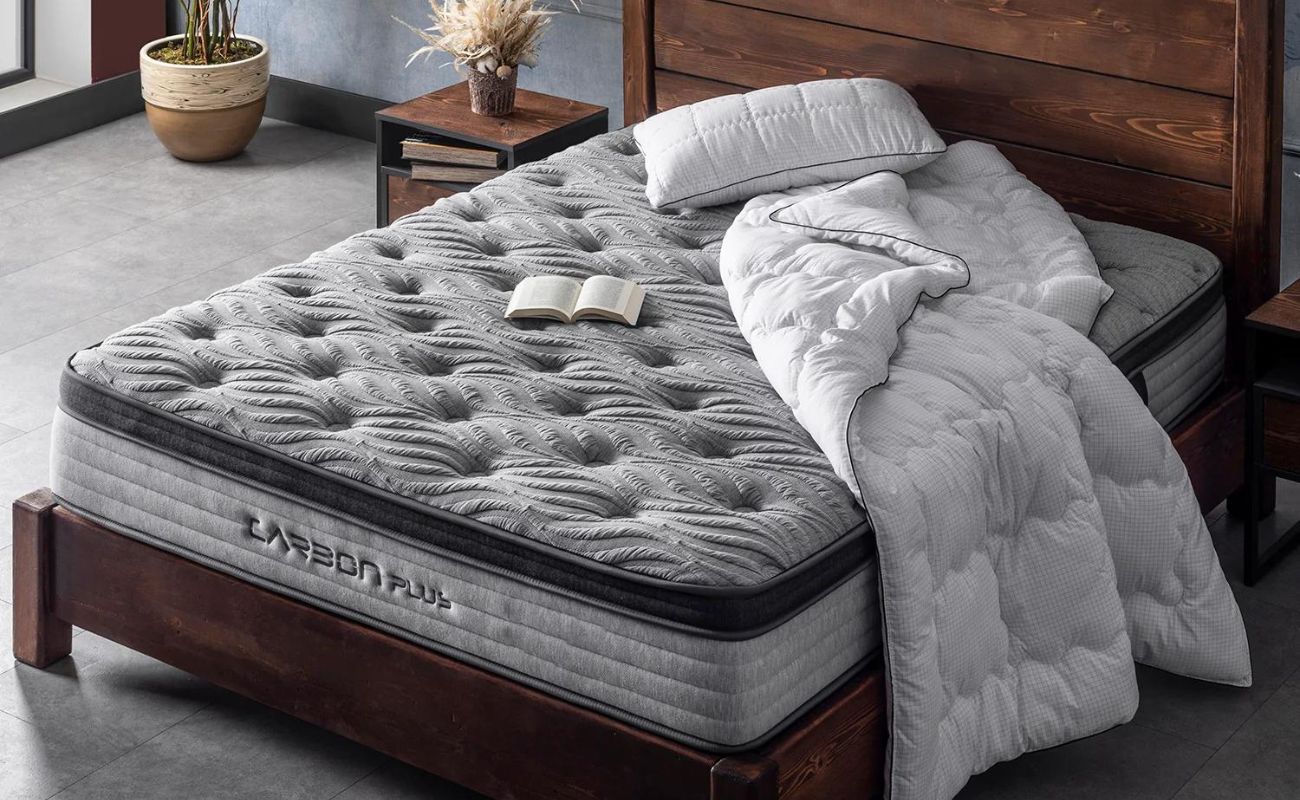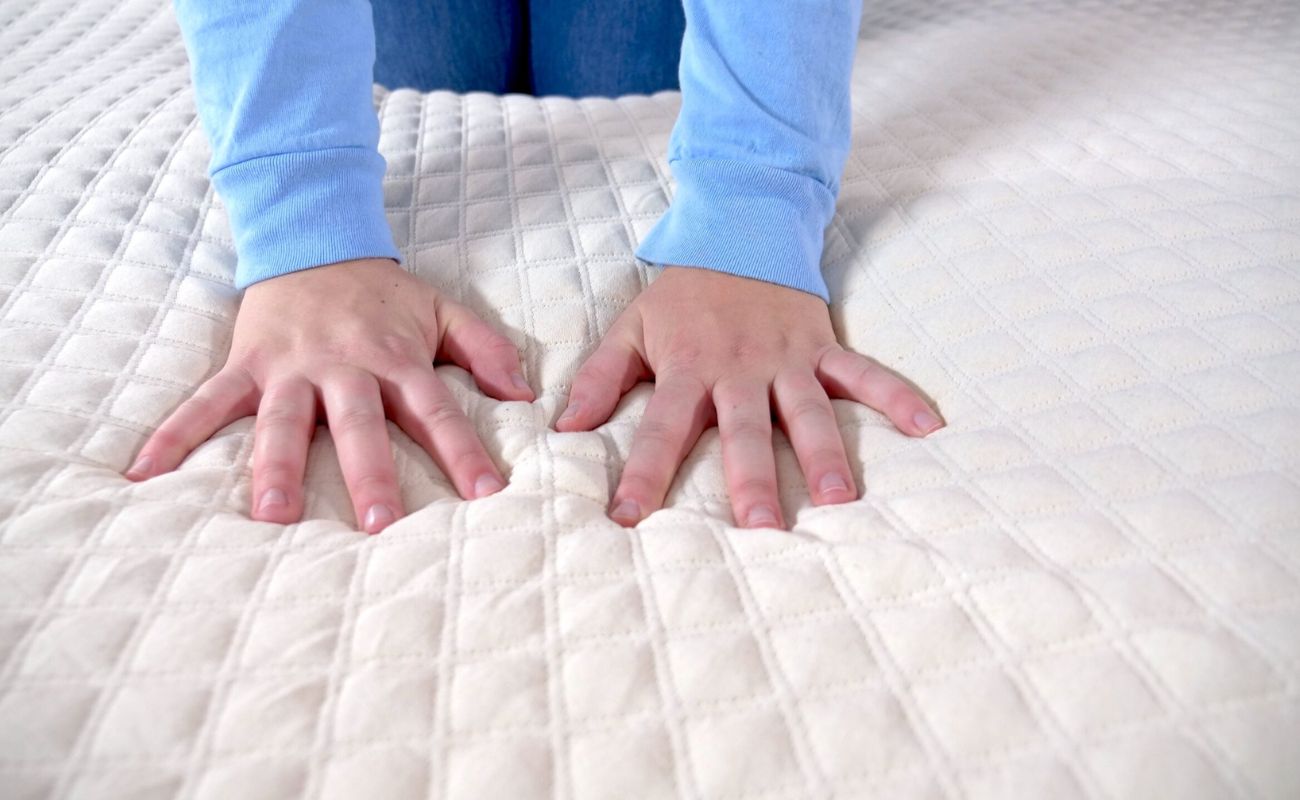Home>Furniture>Bedroom Furniture>How To Firm Up Your Mattress


Bedroom Furniture
How To Firm Up Your Mattress
Modified: January 18, 2024
Learn how to firm up your mattress with our practical tips and tricks. Discover the best bedroom furniture solutions to enhance your sleep and relaxation.
(Many of the links in this article redirect to a specific reviewed product. Your purchase of these products through affiliate links helps to generate commission for Storables.com, at no extra cost. Learn more)
Introduction
Welcome to the ultimate guide on how to firm up your mattress. If you find yourself tossing and turning or waking up with aches and pains, it may be time to give your mattress a little extra support. A firm mattress not only provides better alignment for your spine but also helps alleviate pressure points, leading to a more restful and rejuvenating sleep. Whether your mattress is losing its firmness over time or it was never quite firm enough to begin with, this comprehensive guide will walk you through the steps to transform your sleep surface into the firm and supportive bed of your dreams.
Having a firm mattress is essential for the health and well-being of your back. It ensures that your spine remains in proper alignment and minimizes stress on the muscles and ligaments. A sagging or worn-out mattress can cause your spine to curve unnaturally, leading to discomfort and pain.
But how do you know if your mattress needs firming up? There are several signs to look out for. If you constantly wake up with a sore back or experience frequent tossing and turning during the night, it could be an indication that your mattress is too soft. Another sign is when you feel like you’re sinking into the mattress rather than being supported on the surface. These signs suggest that your mattress lacks the necessary firmness to provide adequate support for your body.
To address these issues, we will discuss various methods and materials that can help you achieve the desired level of firmness for your mattress. You don’t necessarily have to invest in a brand new mattress; often, simple adjustments and additions can make a significant difference. So, let’s dive into the steps for firming up your mattress and reclaiming restful and rejuvenating sleep.
Key Takeaways:
- Firming up your mattress can improve spinal alignment, relieve pressure points, and minimize tossing and turning, leading to better sleep quality and overall well-being.
- Simple adjustments like rotating the mattress, adding a firm mattress topper, and reinforcing the support system can transform your sleep surface into a firmer and more comfortable bed.
Read more: What Is A Firm Mattress
Why Firmness Matters
Choosing the right level of firmness for your mattress is crucial for experiencing a comfortable and supportive sleep surface. The firmness of your mattress directly impacts your sleep quality and overall well-being. Here are a few reasons why firmness matters:
- Spinal Alignment: A firm mattress helps maintain proper spinal alignment while you sleep. When your spine is properly aligned, the muscles and ligaments can relax and recover more efficiently, reducing the risk of discomfort and pain.
- Pressure Relief: Firm mattresses provide better pressure relief by distributing your body weight more evenly. This reduces the risk of developing pressure points, such as on your shoulders, hips, and lower back, and promotes better blood circulation.
- Support for Back and Neck: Firmness is especially important for individuals with back or neck pain. A mattress that is too soft may lack the necessary support to keep the spine in alignment, exacerbating pain and discomfort.
- Reduced Tossing and Turning: A firm mattress minimizes excessive movement while you sleep. It provides a stable surface that reduces the need to constantly shift positions, allowing for a more uninterrupted and restful sleep.
- Longevity: A mattress with proper firmness is more likely to have a longer lifespan. The additional support ensures that the materials and structure of the mattress remain in good condition over time, providing consistent comfort and durability.
It’s important to note that everyone has different preferences when it comes to mattress firmness. The ideal firmness level for you will depend on your body type, sleeping position, and personal comfort preferences. While some individuals may find a very firm mattress to be comfortable, others may prefer a slightly softer surface. Finding the right balance of firmness is key to achieving optimal comfort and support.
Next, we will discuss the signs that indicate your mattress may need firming up and how to assess the current firmness of your sleep surface.
Signs Your Mattress Needs Firming Up
Is your mattress showing signs of wear and tear or gradually losing its firmness? It’s essential to recognize the indicators that your mattress may need firming up. Here are some common signs to look out for:
- Sagging: If you notice visible indentations or sagging areas on your mattress, it’s a clear sign that the support system has weakened. Sagging can disrupt spinal alignment and lead to discomfort and pain.
- Body Aches: Waking up with a sore back, neck, or shoulders can be a sign that your mattress is no longer providing enough support. The lack of firmness can cause your body to sink too deeply into the mattress, leading to muscle strain and joint pain.
- Restless Sleep: If you find yourself tossing and turning throughout the night, constantly searching for a comfortable position, your mattress may be too soft. Inadequate support can lead to restless sleep and disrupted sleep cycles.
- Loss of Edge Support: When the edges of your mattress start to sink or lose their firmness, it becomes challenging to sit or sleep near the edge without feeling like you might roll off. This can limit the usable surface area of your mattress.
- Noise or Springs Poking: A worn-out mattress may develop noisy springs or even expose them through the surface. These issues indicate structural integrity problems and are clear signs that your mattress needs attention.
If you observe any of these signs, it’s time to take action and firm up your mattress. By addressing these issues, you can enjoy a healthier and more comfortable sleep environment. The following steps will guide you through the process of firming up your mattress, from simple adjustments to more extensive measures.
Remember, these steps are not only applicable to old mattresses; they can also be useful for providing additional support to new mattresses that are too soft for your liking. Let’s get started on transforming your mattress into the firm sleep surface you desire.
Materials Needed
Before you start firming up your mattress, gather the following materials to ensure a smooth and effective process:
- Mattress Topper: Look for a firm mattress topper made of high-density foam or latex. This will add an extra layer of support and firmness to your mattress.
- Bed Frame or Foundation: Make sure you have a sturdy and supportive bed frame or foundation. This will provide a solid base for your mattress and help maintain its firmness.
- Adjustable Wrench or Screwdriver: These tools will be useful for tightening any loose screws or bolts in the mattress or bed frame.
- Zippered Mattress Cover: Consider purchasing a zippered mattress cover to protect your mattress and keep it clean and fresh.
- Mattress Support Boards: If your mattress lacks proper support, you may need to invest in support boards or plywood to reinforce its base.
These materials will enable you to address a range of issues and enhance the firmness of your mattress. Depending on the specific problems you encounter, you may not require all these materials. Now that you have everything you need, let’s move on to the step-by-step process of firming up your mattress.
Step 1: Remove the Mattress Cover
The first step in firming up your mattress is to remove the mattress cover. Most mattress covers have a zipper or can be easily removed. You may need to refer to the manufacturer’s instructions to ensure you remove the cover correctly.
By taking off the mattress cover, you will have better access to the inner layers of the mattress and can assess its condition more effectively. It also allows for easier cleaning and maintenance of the mattress itself.
Once the mattress cover has been removed, take a close look at the mattress surface and examine for any visible signs of sagging or wear. Pay attention to the areas that lack firmness or show significant indentations. This assessment will help you identify the areas that require additional support or adjustment.
Removing the mattress cover also presents an opportunity to clean it thoroughly. Follow the care instructions provided by the manufacturer for proper cleaning and maintenance. A clean mattress cover will help protect your mattress and maintain its freshness.
With the mattress cover removed and the mattress surface inspected, you’re ready to proceed with the next step in firming up your mattress.
Read more: How Firm Is A Plush Mattress
Step 2: Rotate the Mattress
Rotating your mattress is a simple yet effective method to help firm it up. Over time, certain areas of the mattress may become more compressed or worn out than others, leading to uneven firmness. By rotating the mattress, you redistribute the weight and pressure, allowing for more even wear and maintaining a consistent level of firmness.
Follow these steps to rotate your mattress:
- Clear the area around the bed to ensure there is enough space to maneuver.
- Get a partner to help you lift and rotate the mattress. It is usually easier to do with two people.
- Stand at one side of the mattress and grab it firmly. Lift the mattress while your partner supports the other side.
- Carefully rotate the mattress 180 degrees, so the head end becomes the foot end. Make sure you keep the mattress level and aligned as you rotate it.
- Gently lower the mattress onto the bed frame or foundation, ensuring it is properly positioned.
By rotating the mattress, you allow the materials to compress and decompress evenly, reducing the impact of body weight on specific areas. This simple action can help restore some firmness to sagging or worn-out parts of the mattress.
It is recommended to rotate your mattress every three to six months to maintain optimal firmness and prolong its lifespan. However, check the manufacturer’s guidelines for specific instructions on rotating your particular mattress model.
Rotating the mattress is just one step in firming it up. Continue to the next step to add an extra layer of support with a mattress topper.
Consider using a mattress topper or a firm mattress pad to add extra support and firmness to your mattress. This can help improve the overall comfort and firmness of your bed.
Step 3: Add a Mattress Topper
Adding a mattress topper is an excellent way to enhance the firmness of your mattress and improve your overall sleep experience. A mattress topper is a thick layer of cushioning material that sits on top of your mattress, providing additional support and comfort.
When selecting a mattress topper to increase firmness, consider these factors:
- Material: Look for a topper made from high-density foam or latex, as these materials offer the firmest support. They can help counteract the softness of your mattress and provide a more solid sleep surface.
- Thickness: Opt for a topper that is at least 2 inches thick to achieve a noticeable difference in firmness. Thicker toppers, such as 3 or 4 inches, can provide even greater support.
- Density: Choose a topper with a high density, as this indicates better durability and support. Look for foam toppers with a density above 3.5 pounds per cubic foot.
- Quality: Invest in a high-quality topper that is known for its durability and good reviews. A well-made topper will not only enhance firmness but also provide long-lasting comfort.
To add a mattress topper, follow these steps:
- Ensure your mattress is clean and free of debris.
- Place the mattress topper on top of the mattress, making sure it is centered and aligned.
- Smooth out any wrinkles or uneven areas on the topper.
- Secure the topper in place with a fitted sheet specifically designed for a thicker mattress or topper.
A mattress topper can significantly improve the firmness of your sleep surface, providing better support for your body. It can also help alleviate pressure points and promote a more restful sleep. With the mattress topper in place, you’re ready to move on to the next step to further adjust the foundation for added firmness.
Step 4: Adjust the Foundation
The foundation of your mattress plays a crucial role in determining its firmness and overall support. If your mattress sits on a foundation that is too soft or unstable, it can contribute to a lack of firmness and sagging. Adjusting the foundation can help improve the overall stability and firmness of your mattress.
Follow these steps to adjust the foundation:
- Check the Bed Frame: Ensure that the bed frame is sturdy and properly aligned. Loose screws or damaged parts can affect the stability of the foundation. Use an adjustable wrench or screwdriver to tighten any loose screws or bolts.
- Consider a New Foundation: If your current foundation is old or worn out, it may be time for a replacement. Look for a solid and supportive foundation designed to enhance the firmness of your mattress. Options include box springs, slatted frames, or platform beds with solid bases.
- Add Support Boards: If your foundation lacks adequate support or has noticeable dips or sagging areas, consider adding support boards or plywood. Place them evenly across the foundation to create a more solid base for your mattress.
- Adjust the Height: If your bed frame allows for height adjustments, experiment with different settings to find the one that provides the optimal level of firmness and support for your mattress.
By adjusting the foundation, you can provide better support for your mattress and help prevent sagging or excessive sinking. A stable and solid foundation is essential for maintaining the firmness and longevity of your mattress.
Once you have made the necessary adjustments to the foundation, it’s time to proceed to the next step, which involves tightening the springs of your mattress.
Step 5: Tighten the Springs
If you have a traditional spring mattress, the firmness can be improved by tightening the springs. Over time, the springs may loosen or become less supportive, contributing to a decrease in firmness. By tightening the springs, you can increase the overall firmness and support of your mattress.
Follow these steps to tighten the springs:
- Locate the Access Point: Look for an access point on the underside of your mattress, usually covered by a fabric panel or zipper.
- Remove the Cover: Unzip or remove the fabric panel to expose the springs.
- Inspect the Springs: Check for any loose or sagging springs. Use your hands or a pair of pliers to tighten any loose springs by turning them clockwise. Be careful not to over-tighten or force the springs, as this can cause damage.
- Reposition the Cover: After tightening the springs, secure the cover back in place by zipping it up or reattaching the fabric panel.
Tightening the springs helps restore the firmness and support of your mattress, minimizing sagging and providing a more even sleep surface. This step is specifically applicable to mattresses with individual coils or open coil system designs.
If you have a foam or hybrid mattress and don’t have access to the springs, you can skip this step and proceed to the next one.
Now that the springs are tightened, let’s move on to the next step where we reinforce the support system of your mattress.
Read more: How Firm Is The Nectar Mattress
Step 6: Reinforce the Support System
Reinforcing the support system of your mattress can further enhance its firmness and stability. This step is particularly beneficial for mattresses that lack proper support or have weakened areas. By reinforcing the support system, you can improve the overall firmness and longevity of your mattress.
Follow these steps to reinforce the support system:
- Identify Weak Areas: Assess the mattress for any areas that feel weak or lack support. This could be the center of the mattress or specific areas where sagging is noticeable.
- Add Support Boards: Place wooden support boards or plywood underneath the mattress in the weak areas. Cut the boards to fit the mattress size and position them evenly to provide additional support.
- Use Mattress Helper: Consider using a product like Mattress Helper, which consists of thin support panels that slide under the mattress to provide extra firmness and support in sagging areas.
- Utilize Mattress Wedges: Another option is to use mattress wedges, which are triangular foam inserts that can be placed under the mattress to provide targeted support and increase firmness in specific areas.
Reinforcing the support system helps prevent sagging and provides a more solid foundation for your mattress. It evens out the weight distribution, reducing the risk of uneven wear and maintaining a consistent level of firmness.
With the support system reinforced, it’s time to move on to the last step, which involves considering a new mattress if all previous measures fail to achieve the desired firmness.
Step 7: Consider a New Mattress
If you have followed all the previous steps and are still unable to achieve the desired level of firmness, it may be time to consider investing in a new mattress. Over time, mattresses can lose their firmness and support, especially if they are old or of poor quality. If your current mattress is past its prime and no longer provides the necessary firmness, it may be worth exploring new options.
Here are a few factors to consider when choosing a new mattress:
- Firmness Level: Determine the ideal level of firmness for your comfort and support needs. Keep in mind that personal preferences vary, so what works for someone else may not work for you. Try different firmness options in stores or consider a mattress with adjustable firmness settings.
- Material: Consider the materials used in the mattress. Foam mattresses, such as memory foam or latex, are known for their ability to provide excellent support and firmness. Hybrid mattresses, which combine foam and innerspring coils, can also offer a good blend of support and comfort.
- Quality: Invest in a high-quality mattress from a reputable brand. A good-quality mattress will often come with warranties and guarantees, ensuring long-lasting performance and durability.
- Sleeping Position: Take into account your preferred sleeping position. Side sleepers may prefer a slightly softer mattress to alleviate pressure points, while back or stomach sleepers generally benefit from a firmer surface for proper spinal alignment.
- Budget: Set a budget and explore options within that range. Remember that a mattress is an investment in your sleep quality and overall well-being, so it’s worth allocating a reasonable budget for a mattress that meets your needs.
When considering a new mattress, it’s a good idea to visit mattress showrooms and try out different options. Lie down on the mattresses and spend a few minutes in your preferred sleep positions to get a feel for the firmness and overall comfort. Take note of any specific features or technologies that may enhance the firmness and support.
Ultimately, selecting a new mattress that suits your firmness preferences and sleep needs can provide long-term benefits for your health and overall sleep quality.
With this final step, you have completed the journey of firming up your mattress. By following these steps and considering a new mattress if necessary, you can enhance the firmness, support, and overall quality of your sleep surface.
Remember, a firm mattress plays a vital role in promoting proper spinal alignment, relieving pressure points, and ensuring a restful night’s sleep. Your body will thank you for providing it with the support it needs to wake up refreshed and ready to take on the day.
Now, it’s time to put your newfound knowledge into action and enjoy the benefits of a firmer and more comfortable mattress!
Conclusion
Congratulations on completing the journey of firming up your mattress! We have explored various steps to enhance the firmness and support of your sleep surface, allowing for a more comfortable and restful night’s sleep. By following these steps, you have taken proactive measures to address sagging, improve spinal alignment, and alleviate discomfort.
Firmness matters when it comes to mattresses. A firm mattress provides proper support, helps maintain spinal alignment, relieves pressure points, and minimizes tossing and turning. It promotes better sleep quality and overall well-being. Whether you have an old mattress that has lost its firmness or a new mattress that isn’t quite as firm as you’d like, these steps can help you achieve the desired level of comfort and support.
We started by understanding the importance of firmness and recognizing the signs that indicate your mattress needs attention. We then explored materials needed for the process, including a mattress topper and possible adjustments to the foundation and springs. We also discussed the option of considering a new mattress if all other efforts fail to achieve the desired level of firmness.
Remember, throughout this process, it’s essential to consider your personal preferences, body type, and sleeping position. What works for one person may not work for another, so it’s essential to find the right balance of firmness that suits your needs and promotes a comfortable and supportive sleep environment.
Investing in the quality of your sleep is a wise decision. A firm mattress can transform your sleep experience, improve your overall health, and enhance your productivity during the day. You deserve a comfortable and supportive bed that allows you to wake up feeling refreshed and ready to take on whatever lies ahead.
Now that you have the knowledge and tools to firm up your mattress, it’s time to put them into action. Assess your current mattress, implement the steps that align with your needs, and enjoy the benefits of a firm and supportive sleep surface. Sweet dreams!
Frequently Asked Questions about How To Firm Up Your Mattress
Was this page helpful?
At Storables.com, we guarantee accurate and reliable information. Our content, validated by Expert Board Contributors, is crafted following stringent Editorial Policies. We're committed to providing you with well-researched, expert-backed insights for all your informational needs.






